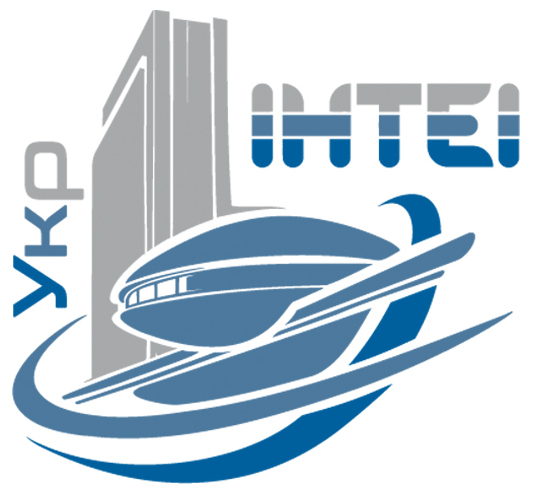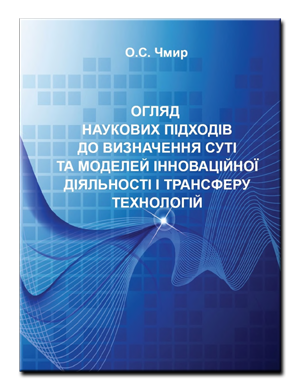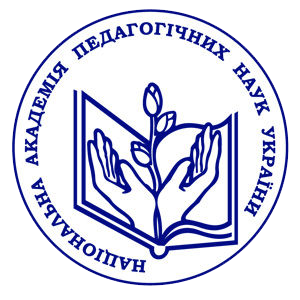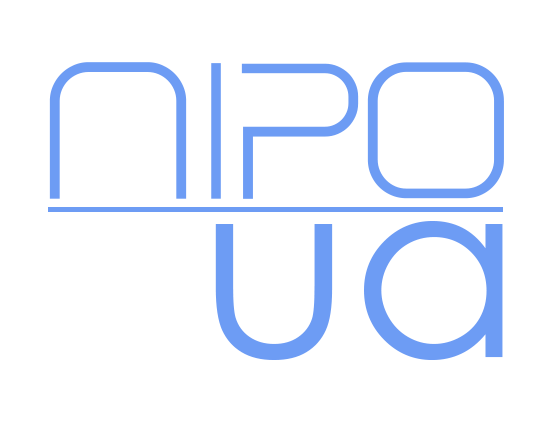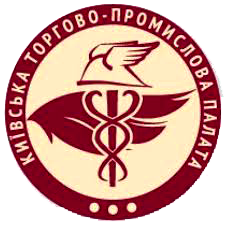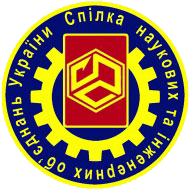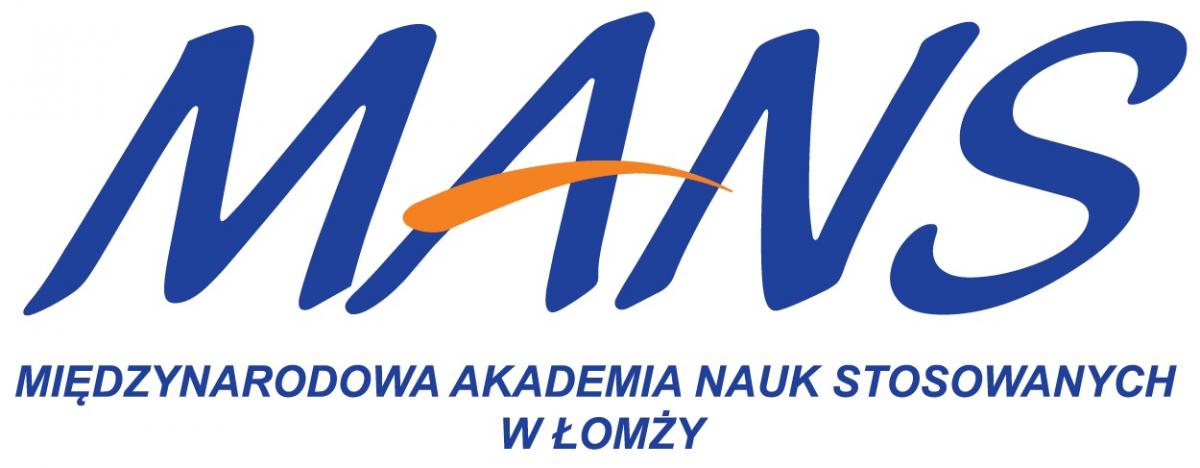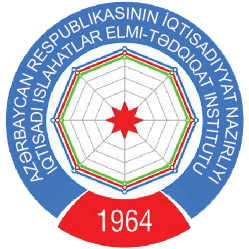http://doi.org/10.35668/978-966-479-082-3
Chmyr О. С. Review of scientific approaches to defining the essence and models of innovation and technology transfer / О. С. Chmyr. – К.: УкрІНТЕІ, 2016. – 120 р.
ІSBN 978-966-479-082-3
UDС 330.341.1.012.23:001.89
Chmyr О.S. — Doctor Sc. in Economics, Professor, Head of Department of the State Scientific Organization “Ukrainian Institute of Scientific and Technical Expertise and Information”, ORCID: https://orcid.org/0000-0002-9376-7344
Review by:
Yegorov I. Yu. — Doctor of Economics, Professor, Head of the Department of Innovation Policy, Economics and Organization of High Technologies of the Institute of Economics and Forecasting of the National Academy of Sciences of Ukraine; https://orcid.org/0000-0002-3829-6383
Pyla V. I. — Doctor of Economics, Professor, Professor of the Department of Public Management and Administration, Khmelnitsky University of Management and Law; https://orcid.org/0000-0001-9489-4233
Cost in printed form: UAH 50.
Abstract. The review of current publications on the development of innovation and technology transfer was carried out. The interpretation of the concept of "innovation" by representatives of different scientific schools is given. Information on existing approaches to the classification of innovations is provided. Emphasis on innovation as a process where knowledge gained through research is transformed into new products and services was made. The essence of open innovations based on materials of scientific researches and practical cases was shown, the list of platforms of open innovations is given.
The idea of the classification of innovations is systematized, a wide range of views on the structure of the innovation process, its content and direction are presented. The most significant characteristics of the innovation process from the standpoint of effective management are presented. The content of innovation processes is revealed, their organizational structure is described, as well as the means of technology transfer. The main models of technology transfer and its institutional support are described.
The list of recommended for acquaintance publications on the issues of innovative development and technology transfer, which includes highly cited works of foreign authors, is given.
An up-to-date list of normative legal acts of Ukraine in the field of innovation is presented.
The publication was prepared based on the results of the study "Comprehensive scientific and methodological and information support for the development of innovation and technology transfer" (Stage 1) (№ DR 0116U04870), commissioned by the Ministry of Education and Science of Ukraine.
Keywords: innovation, innovation process, innovation activity, open innovations, technology transfer, classification, model, institutional support.
REFERENCES
- Dragomir, M., YAmandi, O. & Bodi, SH. (2014) Innovacionnyj menedzhment i internacional'noe sotrudnichestvo. NoGAP Project, 81.
- SHumpeter, J. (2008) Teoriya ekonomicheskogo razvitiya. M., Direktmedia Pablishing, 355.
- Druker, P. (2007) Biznes i innovacii. M., Vil'yams, 432.
- Abbott, S. (12 march 2009) Can innovation be predictable and reliable or not?. Customer Crossroads. URL: http://www.customercrossroads.com/customercrossroads/2009/03/can-innovat...
- Hotyasheva, O. M. (2006) Innovacionnyj menedzhment: Uchebnoe posobie. 2-e izd. Spb., ZAO Izdatel'skij dom «Piter», 264.
- Carpenter, H. (2010) Model for employee innovation. Amazon Prime Case Study. URL: https://www.cloudave.com/8416/model-for-employee-innovation-amazon-prime...
- (2013) Ekonomika znanij: internacionalizaciya i sistematika innovacij. Vil'nyus, Litovskij innovacionnyj centr, 704.
- Glossary. Eureka innovation across boarders. URL: http://www.eurekanetwork.org/
- Druker, P. & Mak'yarello, Dzh. (2010) Menedzhment. M., OOO “I.D. Vil'yams"”, 704.
- Merkulov, N. (2011) Problemy transfera upravlencheskih tekhnologij. Naukovі problemi transformacії ekonomіchnih sistemі rinkovoї ekonomіki, 2, 10–15.
- Nikitin, YU.A. & Rukas-Pasichnyuk, V.G. (2015) Modeli innovacionnogo razvitiya i transfera tekhnologicheskih innovacij nauchnyh organizacij. Vestnik Nacional'noj akademii nauk Ukrainy, 3, 81–87.
- Titov, V.V. (2000) Transfer tekhnologij. M. URL: http://www.metodolog.ru/00384/annot.htm
- Brad, S. (2006) Ingineria si Managementul Inovatiei. Bucuresti, Editura Economica.
- Kristensen, K. (2014) Reshenie problemy innovacij v biznese. Kak sozdat' rastushchij biznes i uspeshno podderzhivat' ego rost. M: OOO «Al'pina Pablisher», 460.
- Kristensen, K. (2015) CHto dal'she? Teoriya innovacij kak instrument predskazaniya otraslevyh izmenenij. M., Al'pina Pablisher, 349.
- SHapiro, G. (2014) Nindzya innovacij. 10 ubijstvennyh strategij samyh uspeshnyh mirovyh korporacij. M., Azbuka Biznes, AzbukaAttikus, 287.
- (2011) World Intellectual Property Report: The Changing Face of Innovation. Geneva: WIPO, 184.
- (2001) Third Community Innovation Survey. Eurostat statistics explained. URL: http://epp.eurostat.ec.europa.eu/portal/page_pageid=0,1136250,0_45572555...
- Robertson, P., Smith, K. & Von Tunzelmann, N. (2009) Innovation in low- and medium-technology industries. Research Policy, 38 (3), 441-446.
- Chesbrough, H. W. (2006) Open innovation: The new imperative for creating and profiting from technology. Harvard Business Press, 239.
- Tether, B. (2002). Who Co-operates for Innovation, and Why: An Empirical Analysis. Research Policy, 31 (6), 947-967.
- Chesbrough, H. (April 12, 2003 ) The era of open innovation. MIT Sloan. URL : http://sloanreview.mit.edu/article/the-era-of-open-innovation/
- Lee, N., Nystén-Haarala, S. & Huhtilainen, L. (2010) Interfacing Intellectual Property Rights and Open Innovation. Research Report No. 225. Lappeenranta University of Technology, Department of Industrial Management. Published Online: 2010-08-20.
- Dahlander, L. & Gann, D. (2010) How Open is Innovation? Research Policy, 39 (6), 699-709.
- Huizingh, E. (2011) Open innovation: State of the art and future perspectives. Technovation, 31 (1), 2-9.
- Bianchi, M., Cavaliere, A., Chiaroni, D., Frattini, F. & Chiesa V. (2011) Organisational Modes for Open Innovation in the Bio-pharmaceutical Industry: An Exploratory Analysis. Technovation, 31(1), 22-33.
- Hall, B. (2010) Open Innovation & Intellectual Property Rights: The Two-edged Sword. Economy, Culture and History Japan Spotlight Bimonthly, 29 (1), 18-23.
- Liholetov, A., Liholetov, V. & Pestunov M. (2009) Strategii, modeli i formy kommercializacii ob"ektov intellektual'noj sobstvennosti. Vestnik CHelyabinskogo gosudarstvennogo universiteta, Seriya: Ekonomika, 9 (20), 19–27.
- Nikitin, YU. & Rukas-Pasichnyuk, V. (2015) Analiz i klassifikaciya modelej transfera innovacionnyh tekhnologij. Aktual'nye problemy ekonomiki, 5 (167), 24-31.
- Drucker, P. (2002, August) The Discipline of Innovation. Harvard Business Review, 80, 95-104.
- Druker, P. & Mak'yarello, Dzh. (2007) Druker na kazhdyj den'. 366 sovetov po motivacii i upravleniyu. M., Vil'yams, 416.
- Gaynor, G. (2009) Doing Innovation: Creating Economic Value. IEEE USA Books & eBooks, 38.
- Diedrichs, E., Engel, K. & Wagner, K. (2006) European Innovation Management Landscape. Assesment of current preactices in Innovation Management Consulting Approaches and Self-Assessment Tools in Europe to define the requirements for future "best practices". European Commision., 78.
- (2013) Microsoft Corporation Best Practices for Innovation: Microsoft Innovation Management Framework. Microsoft Corporation, 31. URL: http://aka.ms/t1ufzy; http://www.innovationexcellence.com/blog/2013/10/02/best-practices-for-i...
- Hiam, A. (2010) Business Innovation For Dummies. Indianapolis, Wiley Publishing Inc., 388.
- Eveleens, C. (2010) Innovation management; a literature review of innovation process models and their implications. Science, 800 (2010), 900-916.
- Cooper, R. & Kleinschmidt, E. (1986) An investigation into the new product process: steps, deficiencies and impact. Journal of Product Innovation Management, 3 (2), 71-85.
- Rothwell, R., Freeman, C., Horsley, A., Jervis, V., Robertson, A. & Townsend, J. (1974) SAPPHO Updated: Project SAPPHO Phase II. Research Policy, 3 (3), 258-91.
- Rothwell, R. (1994) Towards the Fifth Generation Innovation Process. International Marketing Review, 11 (1), 7-31.
- Van der Panne, G., Van Beers, C. & Kleinknecht A. (2003) Success and Failure of Innovation: A Review of the Literature. International Journal of Innovation Management, 7 (3), 309-338.
- Van de Ven, A. H. & Poole, M. S. (1990) Methods for studying innovation development in the Minnesota Innovation Research Program. Organization science, 1 (3), 313-335.
- Nooteboom, B. (2001) Problems and Solutions in Knowledge Transfer. ERIM Report Series Research in Management, Erasmus Research Institute of Management (ERIM), 15.
- Nooteboom, B. (2000) Learning and Innovation in Organizations and Economies. Oxford, Oxford University Press, 346.
- Mulgan, G. & Albury, D. (2003) Innovation in the Public Sector. UK, Strategy Unit, Cabinet Office, 40.
- Verloop, J. (2004) Insight in innovation: managing innovation by understanding the laws of innovation. Elsevier Science, 159.
- Cormican, K. & O’Sullivan, D. (2004) Auditing best practice for effective product innovation management. Technovation, 24 (10), 819-829.
- Dooley, L., Sullivan, D. (2001) Structuring Innovation: a conceptual model and implementation methodology. Enterprise and Innovation Management Studies, 2 (3), 177-194.
- Tidd, J., Bessant, J. & Pavitt K. (2005) Managing innovation: integrating technological, managerial organizational change. New York.
- Tidd, J. (2006) A Review of Innovation Models Discussion. Paper 1: Science and Technology Policy Research Unit. London, Imperial College London, 17.
- Andrews, J., Sirkin, H., Haanaes, K. & Micheal, D. (2007) Innovation 2007. A BCG Senior Management Survey /Report/. Boston, Boston Consultancy Group, 36.
- Hansen, M. & Birkinshaw, J. (2007) The Innovation Value Chain. Harvard business review, June, 1-13.
- Jacobs, D. & Snijders, H. (2008) Innovation routine. How managers can support repeated innovation [in Dutch], Stichting Management Studies, Van Gorcum, Assen.
- Ozhegov, S. (1972) Slovar' russkogo yazyka. M., Sovetskaya enciklopediya, 846.
- (1979) Sovetskij encikl opedicheskij slovar'. M., Sovetskaya enciklopediya, 1600.
- Kohanovskij, V. P. i dr. (2003) Filosofiya dlya aspirantov : uchebnoe posobie. Seriya «Vysshee obrazovanie», 2-e izd., Rostov-na-Donu, Feniks, 448.
- Technology transfer in countries in transition: policy and recommendations division for certain countries in Europe and Asia. WIPO, 64.
- Kozhuhar, V. M. (2012) Innovacionnyj menedzhment: Uchebnoe posobie. M., Izdatel'sko-torgovaya korporaciya «Dashkov i K°», 292.
- (2010) Project on intellectual property and technology transfer: common challenges – building solutions (Recommendations 19, 25, 26 and 28). Document prepared by the Secretariat. Geneva,Committee on Development and Intellectual Property (CDIP), 10.
- Bar-Zakay, S. (1971) A technology transfer model. Technological Forecasting & Social Change, 2, 321–337.
- Behrman, J. & Wallender, H. (1976) Transfers of manufacturing technology within multinational enterprises. Ballinger, 308.
- Dahlman, C. J. & Westphal, L. E. (1981) The meaning of technological mastery in relation to transfer of technology. The Annals of the American Academy of Political and Social Science, 458 (1), 12-26.
- Steenhuis, H. & de Bruijn, E. (2005) International Technology Transfer: Building Theory from multiple case – study in the aircraft industry. Paper presented at the Academy of Management Annual Meeting: A new vision of management in the 21st century. Honolulu, 26.
- Ramanathan, K. (2008) An overview of technology transfer and technology transfer models. International Conference on South-South Cooperation for Technology Transfer and Development of Small and Medium Enterprises, 18-22.
- Bradley, S., Hayter, C. & Link, A. (2013) Models and Methods of University Technology Transfer / Working Paper. University of North Carolina at Greensboro: Department of Economics Working Paper Series, 10-13.
- Kapica, YU.M. (2011) Osnovnye etapy peredachi tekhnologij. Mezhdunarodnyj seminar «Prakticheskie voprosy transfera tekhnologij: opyt organizacij gosudarstv-chlenov ES i Ukrainy». 30.05.2011. URL: http://www.researchclub.com.ua/jornal/174
- Le Grange, L. & Buys, A. (2020) A Review of technology transfer mechanisms. The South African Journal of Industrial Engineering, 13 (1), 81–99.
- Gorschek, T., Garre, P., Larsson, S. & Wohlin C. (2006) A Model for Technology Transfer in Practice. IEEE Software, November/December, 88–95.
- Kozachenko, V. & Heorhiadi, N. (2010) Suchasnyi stan merezh transferu tekhnolohii za kordonom. Visnyk Natsionalnoho universytetu «Lvivska politekhnika», 691, 162–172.
- Fedosova, T. V. (2011) Kommercializaciya rezul'tatov NIOKR i transfer tekhnologij. Uchebnoe posobie na modul'noj osnove s diagnostiko-kvalimetricheskim obespecheniem. Izd-vo TTI YUFU, 128.
- Pogrebova, E. (2009) Razvitie centrov transfera tekhnologij i biznes-inkubatorov v vysshih uchebnyh zavedeniyah Rossii. Servis v Rossii i za rubezhom, 15, 171-191.
- Terebova, S. V. & Volkova L. A. (2011) Principy i praktika funkcionirovaniya zarubezhnyh centrov transfera tekhnologij. Ekonomicheskie i social'nye peremeny: fakty, tendencii, prognoz, 1 (13), 101-107.
- Science park (IASP official definition). URL: http://www.iasp.ws/knowledge-bites
- Duff, A. (1994) Best Practice in Business Incubator Management / TCG: Sustainable Economic Organisation Through Networking”. Studies in Organizational Analysis and Innovation. Kensington: Industrial Relations Research Centre, 186.
- Hamdani, D. (2006) Conceptualizing and Measuring Business Incubation / Working paper. Ottawa: Minister of Industry, Science, Innovation and Electronic Information Division, 25.
- Lalkaka, R. (1997) Lessons from international experience for the promotion of business incubation systems in emerging economies. UNIDO, Small and Medium Industries Branch, 41.
- Ndabeni, L. (2008) The contribution of business incubators and technology stations to small enterprise development in South Africa. Development Southern Africa, 25 (3), 259-268.
- Hannon, P. (2003) A conceptual development framework for management and leadership learning in the UK incubator sector. Education + Training 45 (8/9), 449-460.
- Eshun, J. (2006) Where Do Institutions Come From? // The Origins, Evolution & Proliferation of Business Incubators. Conference Papers. Annual Meeting. Montreal, American Sociological Association, 36.
- Schwartz, M. & Gothner, M. (2009) A multidimensional evaluation of the effectiveness of business incubators: an application of the PROMETHEE outranking method. Environment and Planning : Government and Policy, 27 (6), 1072-1087.
- Andreev, G. (2006) Set' transfera tekhnologij vysshej shkoly, ee celi i zadachi. Innovacii, 7 (94)., 24-27.
- (2005) Final Report of the Expert Group on Enterprise Clusters and Networks. Brussels: European Commission Enterprise Directorate, 92.
- Gečas, K. & Jucevičius, R. (2007) Taikomojo mokslinio tyrimo darbas – programinė studija «Inovacijų versle plėtra: strateginiai prioritetai ir veiksmai». Vilnius, 89.
- Andersson, T., Schwaag-Serger, S. & Sörvik J. (2004) The Cluster Policies Whitebook. Holmbergs: IKED, 266.
- Dzhazairi, A. (2010) Prezentaciya «Osnovnye problemy peredachi tekhnologij v stranah s perekhodnoj ekonomikoj». Mezhregional'nyj konsul'tacionnyj sovet WIPO po voprosam upravleniya nauchnoj intellektual'noj sobstvennost'yu i innovacionnym processom na rannem etape v stranah s perekhodnoj ekonomikoj. Budapesht. URL: http://http://www.wipo.int/
- Zahra, S. & George G. (2002) Absorptive Capacity. A Review, Reconceptualization and Extension. Academy of Management Review, 27 (2), 185-203.
- Teece, D., Pisano, G. & Shuen, A. (1997) Dynamic capabilities and strategic management. Strategic Management Journal, 18, 509-534.
- Todorova, G. & Durisin, B. (2007) Note Absorptive Capacity: Valuing a Reconceptualization. Academy of Management Review, 32 (3), 774–786.
- Cohen, W. & Levinthal, D. (1990) Absorptive capacity: a new perspective on learning and innovation. Administrative Science Quarterly, 35, 128-152.
- (2016) Kompleksne naukovo-metodychne ta informatsiine zabezpechennia rozvytku innovatsiinoi diialnosti i transferu tekhnolohii : zvit pro NDR (zakliuch.) : UkrINTEI. K., 39. № ДР 0116U004870.
